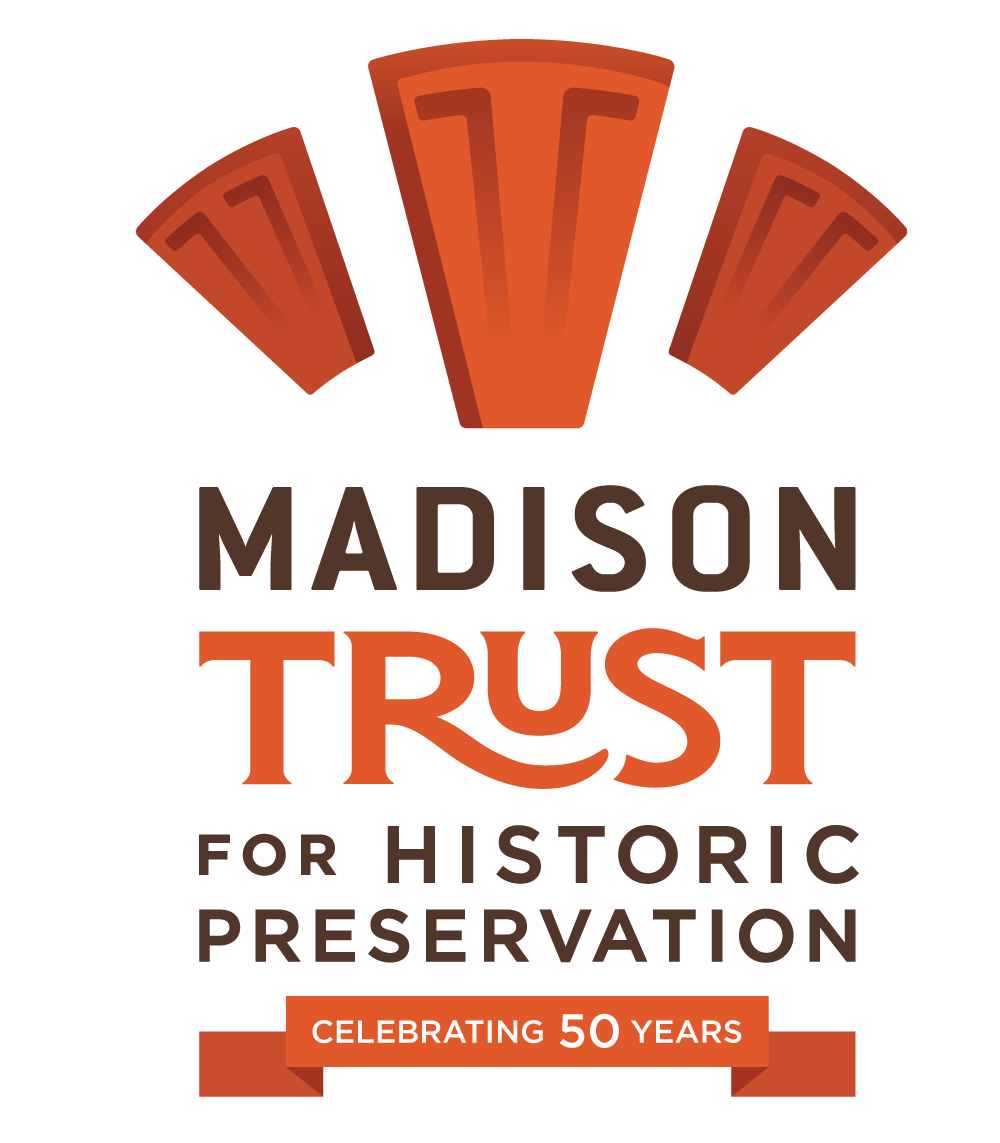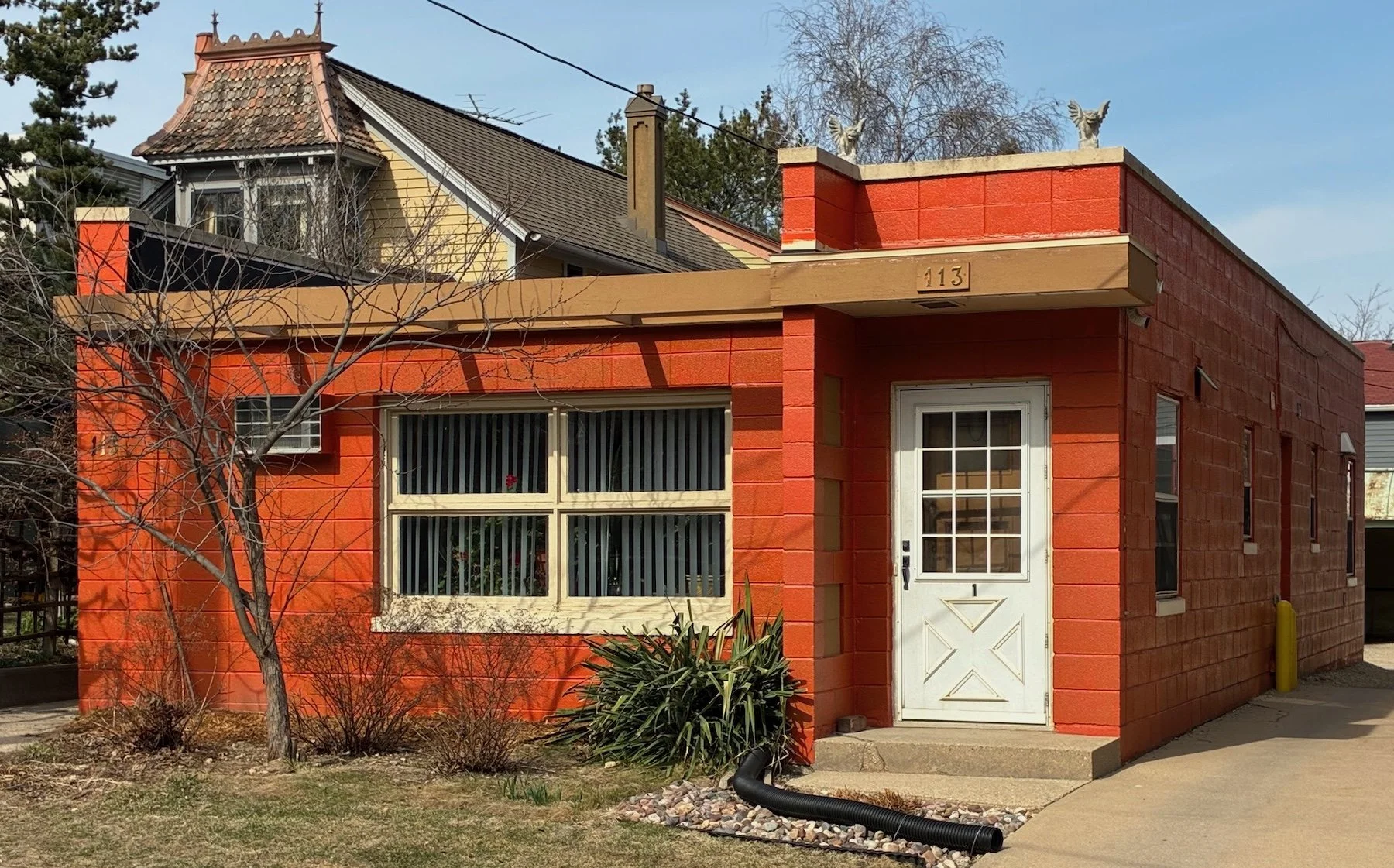Our latest blog post wraps up a three-part series exploring Madison's concrete block homes, this time focusing on the post-World War II era. From modest Ranches to Usonian gems and bold Contemporary designs, these houses reveal how visible concrete block structures helped shape mid-century residential architecture. Learn how builders balanced form and function, and how these enduring materials continue to tell stories of innovation, aesthetics, and changing tastes.
Read MoreThis month’s blog post continues our exploration of early concrete block construction in Madison. As block design shifted from rough rockface to smooth modern surfaces, a new generation of houses emerged. Many reflecting the clean lines and bold geometry of the International Style. Highlights include striking examples from Monona’s Frost Woods, Shorewood Hills, and Madison’s Crestwood neighborhood, which would soon become home to the city’s largest collection of concrete block modernist homes.
Read MoreThere are times we must re-imagine a familiar place that can no longer be seen. That happens when we conjure up a demolished building, perhaps as we drive by a construction site in Madison and have only a vague memory of what was recently removed. The rustiness of our memory varies from person to person, depending on the building itself, the site, and its context, as well as its connection to our own lives and its role in the community.
Read MoreIn the early 1900s, Madison saw a wave of homes built with a bold new material—concrete block. Cement contractor William Febock’s 1907 bungalow was among the first, showcasing a trend that would shape neighborhoods across the city. This post explores the origins, styles, and lasting charm of early concrete block houses, from modest bungalows to grand Queen Annes. Discover how innovation met tradition in Madison’s historic homes.
Read MoreGates of Heaven Synagogue is one of the smaller landmark buildings in Madison. It is also one of the most visible given its location at North Gorham and East Butler Streets, a site to which it was moved in July of 1971. For more than 100 years, the synagogue stood on West Washington Avenue. This is the story of the Old Synagogue in its original location.
Read MoreWith three-sided footprints, the Suhr Building and the Jackman Building are examples of a “flatiron,” a common building form in Madison thanks to the street plan devised by James Duane Doty when he was pitching the isthmus, then occupied by the Ho-Chunk, as the capital of the new Wisconsin Territory in 1836. This month we look at this popular building form and where we see it in our community.
Read MoreAt the Madison Trust for Historic Preservation, celebrating the city’s historic places is at the core of our mission. With the season of celebrations upon us, there’s no better time to share the joy of Madison’s history and architecture than through a gift from the Madison Trust—whether it’s an annual membership, summer walking tour tickets, or our NEW swag! We also mention a range of locally inspired gifts, from books and ornaments to a Frank Lloyd Wright tea set, all celebrating the things that make Madison and Wisconsin truly special.
Read MoreThe reign of Queen Anne—as an American architectural style—ended more than 100 years ago. In its heyday, the style was immensely popular across the country. The Wisconsin Architecture and History Inventory has records for 1,007 Queen Anne houses in Dane County, and 490 in Madison. Though the branches of the family tree have grown slender and sparse, I’ve tracked down some local, modern-day descendants that demonstrate clear bloodlines.
Read MoreI’m happy to travel for architecture. I’m also content to find treasures close to home. Traveling far from home is not a requirement for finding places and things that are interesting, pleasurable, and illuminating. This month I look at two sub-styles I set aside as “exceedingly rare” in my recent piece about Spanish Revival influences seen in Madison and Dane County to see what they can tell us.
Read MoreIn November of 2022, I wrote about French-style houses in the Madison area. This month I turn my attention to Spanish-influenced buildings, a category which is at once narrower—examples are scarce in our area—and broader—there are more than houses to consider.
Read MoreAs we celebrate the 50th anniversary of the Madison Trust and the 35th year of the Awards, this month we are looking back on just a few of the 279 recipients that have given us a reason to celebrate.
Read MoreThe intersection of Main and Carroll Streets has long been a prominent site on the Capitol Square. While that’s due partly to the presence of the Park Hotel, it’s also a function of topography. Moving counterclockwise around the capitol, whether on foot or on wheels, the slow rise of Carroll Street enhances the presence of the building at the corner of the square ahead. In Madison’s early years, that was the buff-colored building visible just above the trees on the left side of the postcard view above. This month I look at that building and what has followed it.
Read MoreCast iron is an ancient material. By the eighteenth century it was employed in the United States for framing industrial buildings and by the 1840s was used for cast-iron façades. As it became popular across the country, decorative cast-iron appeared on Madison buildings in the 1850s. For architectural purposes it could be put to many uses, structural and decorative, since it was easily cast in a range of forms and styles, and it was inexpensive, especially compared to stone.
Read MoreThe National Register of Historic Places was created in 1966 as a provision of the National Historic Preservation Act. When President Lyndon Johnson signed the bill on October 16, two buildings became the first Dane County entries on the register: the Robert M. La Follette House in Maple Bluff (733 Lakewood Blvd.) and North Hall on the University of Wisconsin-Madison campus. Dane County now has 272 buildings, structures, effigy mounds, and other places on the National Register. Since I started writing these posts a little more than four years ago, I’ve done a biennial report of recent additions to the National Register. Read on for the summaries of nine properties that were added in 2022 and 2023.
Read MoreThis time of year, I get itchy feet. There are buildings and places to see, but limited daylight, cold temperatures, and snow and ice (when they come) make that difficult if not impossible. One way to satisfy the itch is through the small screen, be it a TV or laptop. This month I offer a small sample of television programs, video presentations, and lectures that may help the architecture enthusiast cope as daylight slowly increases and temperatures creep up.
Read MoreCelebrating Madison’s historic places is at the heart of our mission at Madison Trust for Historic Preservation. Since this is a season full of celebrations, there is no better time to spread the joy to be found in vintage buildings with a gift from the Madison Trust and others—a membership, walking tour tickets, note cards, books, ornaments, and much more. We also have further suggestions for locally focused gifts that spotlight the places that make Madison and Wisconsin special.
Read MoreArtists sometimes paint self-portraits, authors occasionally write autobiographies, and architects often design their own houses. This month, I look at houses designed by three Madison architects for their own families. Each architect had a career that spanned decades and did a range of work for a variety of clients.
Read MoreRailroads—instrumental to the making of the United States as we know it—played a profound role in Madison’s growth and development. At their zenith, steel rails of three companies fanned out from the city in nine directions. Around the turn of the twentieth century, well more than one hundred trains (freight and passenger combined) rolled over those lines everyday. Rail declined across the country following World War II and the last passenger train pulled out of Madison in 1971, but freight service began to rebound in the 1980s. Evidence of Madison's railroad past is all over the city. Discover some of it in this blog post by Scott Lothes, president and executive director of the Center for Railroad Photography & Art (www.railphoto-art.org), the Madison Trust's partner in this year's Specialty Tour.
Read MoreThis month I look back only 25 years to the 1998 Parade of Homes presented by the Madison Area Builders Association (MABA). I appreciate that 25-year-old houses may not be “historic” to many preservationists. The Madison Landmarks ordinance has no minimum age requirement, while the National Register of Historic Places generally requires that properties be at least 50 years of age. In fact, houses of any age have things to tell us about design, social status, marketing, and more.
Read MoreMadison got off to a slow start. It was a city on paper when selected as the territorial capital in 1836. Ten years later, when Madison received its village charter, there were only 626 residents. But soon, the boom began and Madison attracted entrepreneurs and hustlers, capitalist and swindlers, opportunists and optimists. When chartered as a city in 1856, the population was 6,863. Among the newcomers were James and Susan Bowen, who arrived in 1852.
Read More



















